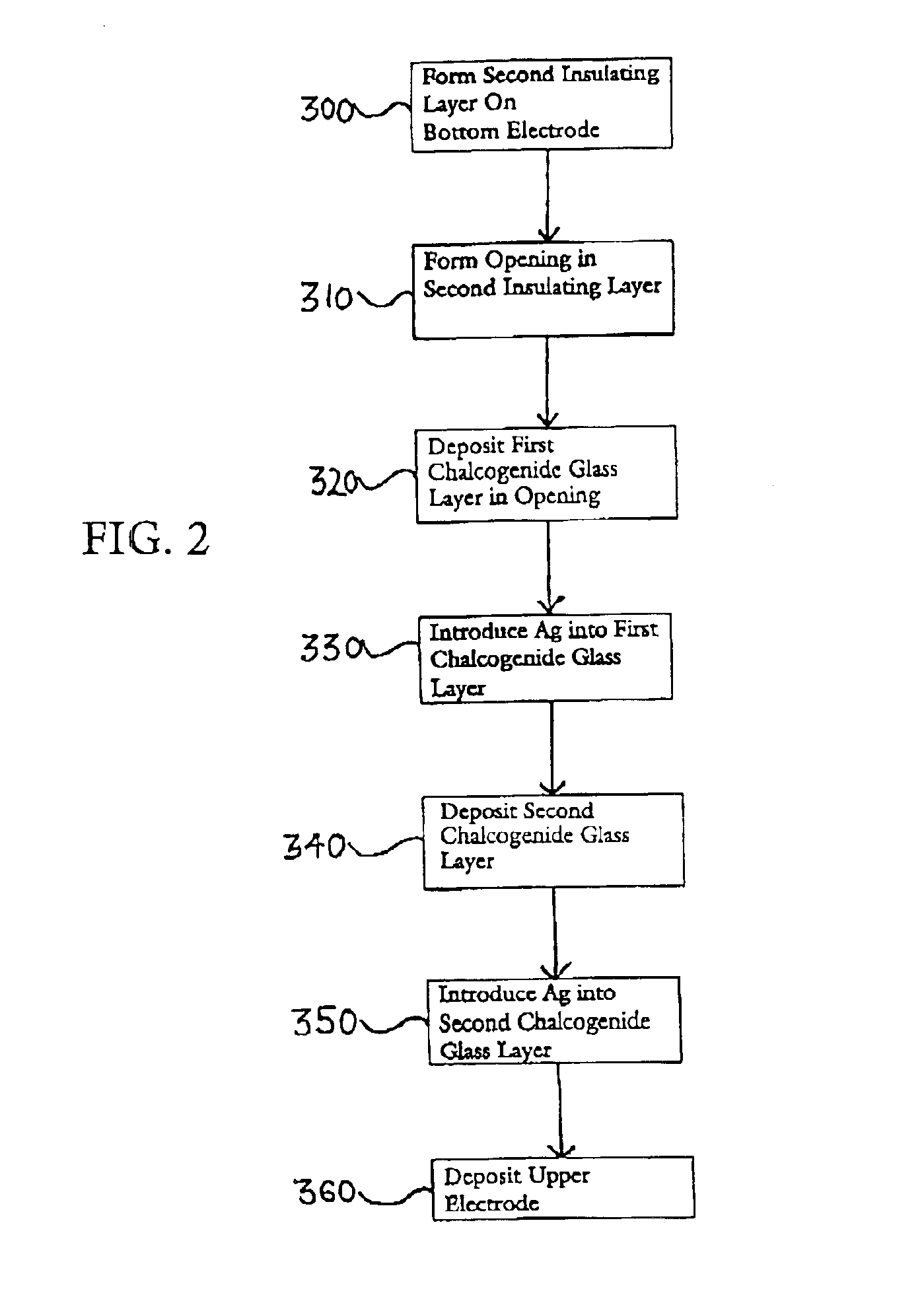Methods for forming chalcogenide glass-based memory elements
a technology of chalcogenide glass and memory elements, applied in the direction of basic electric elements, electrical equipment, semiconductor devices, etc., can solve the problems of difficult and complicated fabrication of pcram elements containing only glass with an open matrix used by itself,
- Summary
- Abstract
- Description
- Claims
- Application Information
AI Technical Summary
Benefits of technology
Problems solved by technology
Method used
Image
Examples
first embodiment
[0042]Using the FIG. 3 structure containing bottom electrode 56 as a starting point and referring to the processing sequence shown in FIG. 2, the invention will now be explained. At step 300 in FIG. 2, a second insulating layer 58 is formed over bottom electrode 56, as shown in FIG. 3. The second insulating layer 58 may comprise the same materials as first insulating layer 54, such as SiO2 and Si3N4. At step 310 an opening 60 is formed in second insulating layer 58 to provide the structure shown in FIG. 4. Opening 60 may be formed by known methods in the art, such as a conventional patterning and etching process. Opening 60 is formed such that the surface of bottom electrode 56 is exposed in opening 60. After the patterning and etch back process any masking material used is stripped away to leave the structure at a state represented in FIG. 4.
[0043]At step 320 a first chalcogenide glass, preferably a germanium-selenide glass layer 62, is formed in opening 60 on top of bottom electro...
second embodiment
[0056]Referring now to FIG. 12, the present invention includes forming at least one additional silver-containing germanium-selenide glass layer above second silver-containing germanium-selenide glass layer 74. This is accomplished in the same way that second silver-containing germanium-selenide glass layer 74 is formed over first silver-containing germanium-selenide glass layer 68. Specifically, at step 350A, a chalcogenide glass, preferably an additional germanium-selenide glass layer 80, is deposited in opening 60 as shown in FIG. 13. This may be accomplished in the same ways that second germanium-selenide glass layer 70 is deposited at step 340. The additional germanium-selenide glass layer 80 preferably has a stoichiometry of GexSe100−x. The additional germanium-selenide glass layer 80 has a glass matrix structure distinct from any adjacently placed germanium-selenide glass layer, including second silver-containing germanium-selenide glass layer 74 in the case of a first additio...
PUM
 Login to View More
Login to View More Abstract
Description
Claims
Application Information
 Login to View More
Login to View More - R&D
- Intellectual Property
- Life Sciences
- Materials
- Tech Scout
- Unparalleled Data Quality
- Higher Quality Content
- 60% Fewer Hallucinations
Browse by: Latest US Patents, China's latest patents, Technical Efficacy Thesaurus, Application Domain, Technology Topic, Popular Technical Reports.
© 2025 PatSnap. All rights reserved.Legal|Privacy policy|Modern Slavery Act Transparency Statement|Sitemap|About US| Contact US: help@patsnap.com



